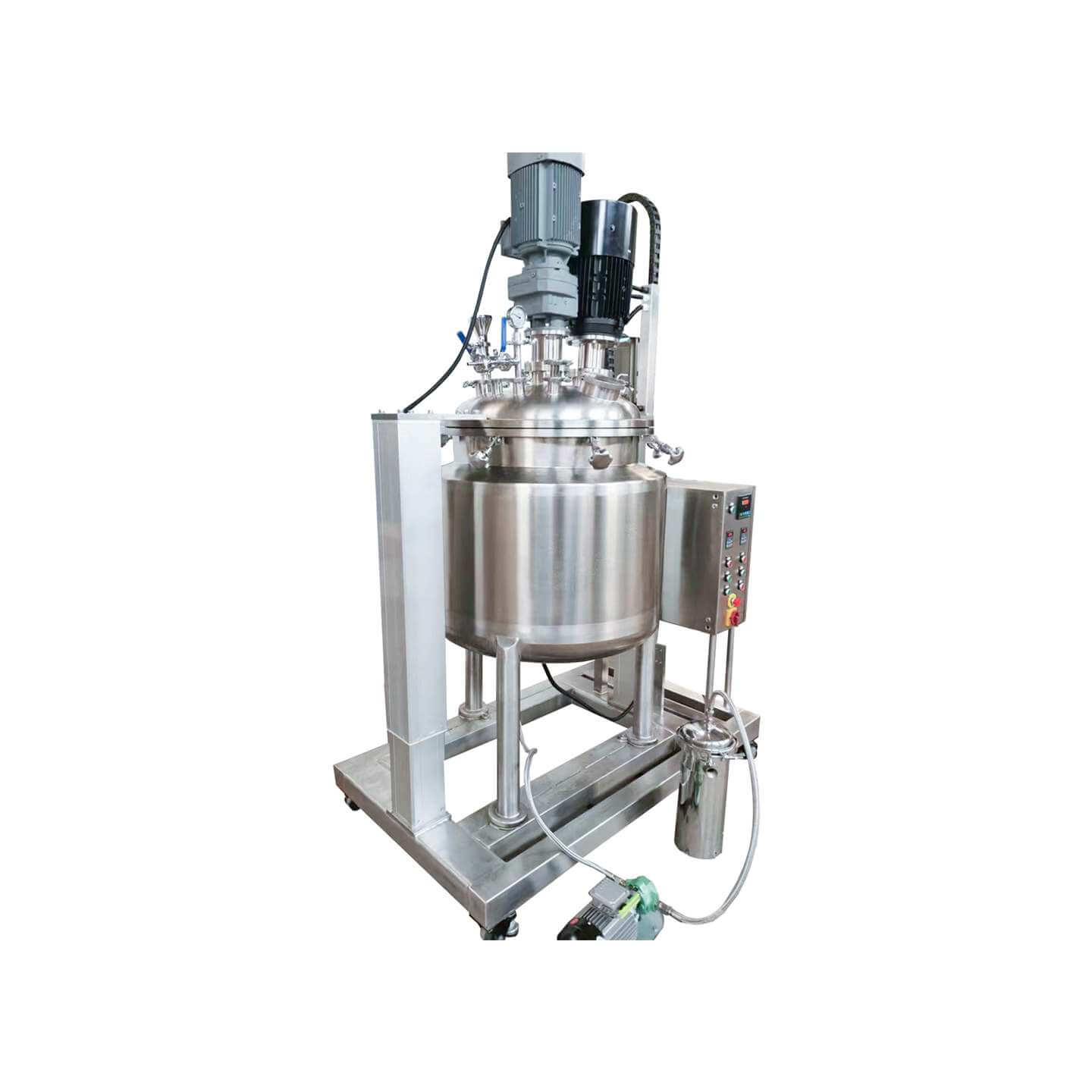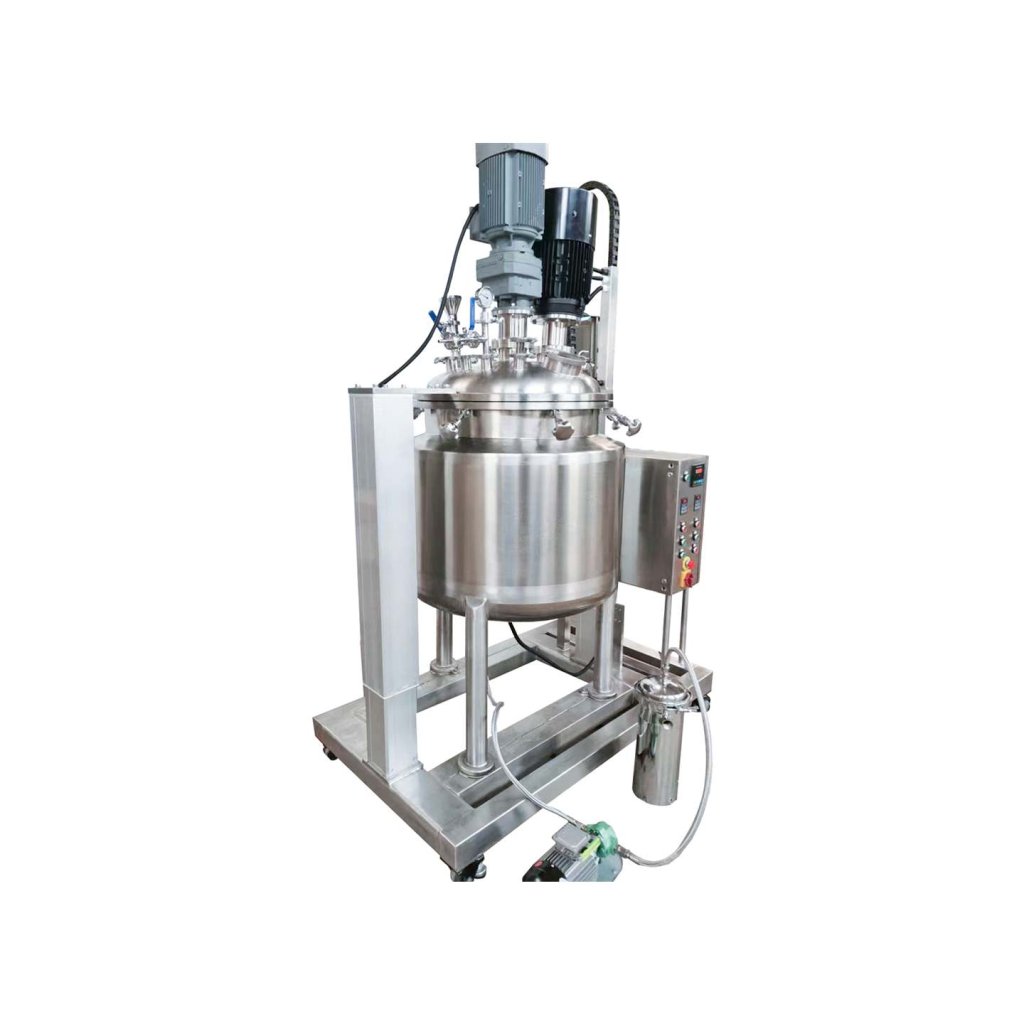

Laboratory Reactor
Laboratory reactor: used in the chemical industry, pesticide, paint, and other fields
Material
glass, stainless steel (316, 304), carbon steel, others
Capacity (L)
10-10000+
Mixing system
anchor, paddle, frame and others
Heating system
electric heating, oil heating and others
The laboratory reactor is small in size, beautiful in appearance, light, and fast in installation. It is composed of a pot body, pot cover, stirrer, jacket, support and transmission device, shaft sealing device, etc. The type of stirring device, rotation speed, sealing structure, heating method, etc. are produced.
Request a quoteLaboratory reactors are used for research in laboratories. Because they involve high temperatures and high pressures, they have relatively high safety performance requirements. The A-type double-line sealing device of the laboratory reactor has the characteristics of static sealing, no leakage of rotating parts, safety and reliability, and the cylinder and heater can be completely separated. It greatly facilitates the disassembly of laboratory reactors, while improving work efficiency and providing considerable assistance to laboratory workers.

Structural composition of laboratory reactor
A laboratory reactor is composed of a reaction vessel, stirrer, transmission system, cooling device, safety device, heating furnace, etc. The cauldron body and cauldron cover are made of 1Cr18Ni9Ti stainless steel, and the cauldron cover is a solid flat cover. The two are tightly connected by main bolts and nuts evenly distributed in the circumferential direction. The main sealing port of the laboratory reactor adopts A-type double-line sealing, and the other sealing points adopt the line contact sealing form of arc surface and flat surface, arc surface, and arc surface. Relying on the high precision and smoothness of the contact surface to achieve a good sealing effect. The laboratory reactor is equipped with a barrel-shaped silicon carbide furnace core outside the body. The electric furnace wire is passed through the furnace core, and its end is passed through the lower part of the furnace shell side and is connected to the controller through wiring studs and rubber-sheathed cables.
The cylinder cover is equipped with a pressure gauge, bursting membrane, safety device, vapor-liquid phase valve temperature sensor, etc.It is convenient to understand the reaction situation in the laboratory reactor at any time, adjust the medium ratio in the laboratory reactor, and ensure safe operation. The coupling is mainly composed of a pair of inner and outer magnetic rings with strong magnetic force, with a pressure-bearing spacer in the middle. The mixer is driven by a servo motor through a coupling. By controlling the speed of the servo motor, the purpose of controlling the stirring speed can be achieved.
There are three types of laboratory reactor lifting devices: electric lifting, manual lifting, and hydraulic lifting. Generally speaking, for small laboratories, manual lifting is sufficient. Manual lifting can be divided into two types: cylinder lifting and cylinder cover lifting. Both lifting methods can turn the laboratory reactor 180 degrees, and users can choose to use it according to experimental requirements.

Working characteristics of laboratory reactor
The laboratory reactor has the characteristics of smooth operation, low noise, and easy operation. It is an ideal precision equipment for various chemical reactions in the laboratory. The insulator of laboratory reactors is alumina, zirconia, and other ceramic powders prepared by hydrothermal method. It has the characteristics of fine particle size, high purity, good dispersion, and controllable morphology. At the same time, the safety valve, pressure gauge, temperature, evaporator hole, electric heating cup, electrical instruments, etc. on the jacket and lid of the laboratory reactor must be inspected regularly. If there is a problem with a certain component, it must be replaced or repaired in time.
Laboratory reactors have very high requirements for high-temperature resistance and high pressure resistance, so keeping their inner wall clean can ensure their high-temperature and high pressure resistance. So its regular maintenance is very important, especially the inner wall, which must be cleaned frequently. Therefore, chemical cleaning such as alkali solution and acid corrosion can be used to remove dirt such as paint and carbon deposits. Then use other cleaning solvents to remove other contaminants that chemical cleaning cannot remove.


